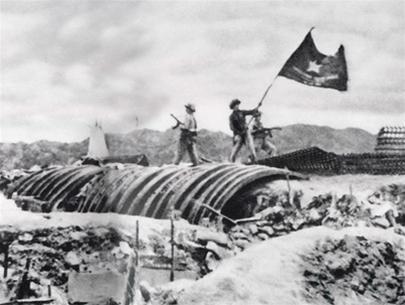Response to – Applying the Logistic Lessons of the French Defeat at Dien Bien Phu
In the post, ‘Applying the Logistic Lessons of the French Defeat at Dien Bien Phu’ CAPT Williamson has correctly identified the requirement to balance the interplay between effectiveness and efficiency. During the planning phase for an operation, logisticians should aim to design a supply chain that emphasises effectiveness closer to the main effort in order to maintain tempo. Efficiency remains a critical element of logistics, however is more important closer to the National Support Base. An effective logistician knows when and where to switch between the two.
Another observation by CAPT Williamson “The problem with the word chain in the supply chain concept is that it implies that each link and each join is the same size and has the same capability” is insightful and speaks to the efficiency versus effectiveness challenge. To unpack this point further, maximising throughput at each node requires supply chain visibility. Unfortunately a prolonged underinvestment in logistics information system (LOGIS) technology has impeded the ability to achieve visibility and has led to antiquated processes and a general lack of trust in the logistics system. Without supply chain visibility and a Logistics Command Operating Picture (LCOP), units will stockpile to ensure maintenance of tempo. The ongoing Australian Army Logistics Review led by DGLOG-Army, has identified LOGIS technology as a high priority and investment options will be submitted to the Chief of Army at the conclusion of the Review.
CAPT Williamson discusses aerial resupply and compares the issues from the French defeat at Dien Bien Phu with concerns with the Australian Army’s current aerial delivery capability. Aerial resupply has not been practiced well in the Australian Army, however a recent experiment (HEADLINE 16) identified the potential need for aerial resupply if we were to deploy to our near region where the road networks are inadequate for our land vehicles. Subsequently, precision air drop capability has been recently submitted as a land force requirement as part of the new Defence Capability Assessment Program (DCAP).
CAPT Williamson should be applauded for her identification of issues in the logistics system, particularly her use of historic lessons to inform future force design. It’s also refreshing to read her honest reflections of her past logistics appointments. Hopefully this response serves to reassure the author and greater Army that the Future Land Warfare Branch (FLW Branch) is aware of the issues raised by CAPT Williamson and we are working towards potential solutions. FLW Branch is not across all land force issues nor will it have all the answers. However, as the LPF directly sits within the FLW Branch, I encourage all officers and soldiers to write to the LPF about their concerns or ideas so together we can design a land force that can prevail in a complex future operating environment.
The views expressed in this article and subsequent comments are those of the author(s) and do not necessarily reflect the official policy or position of the Australian Army, the Department of Defence or the Australian Government.
Using the Contribute page you can either submit an article in response to this or register/login to make comments.




